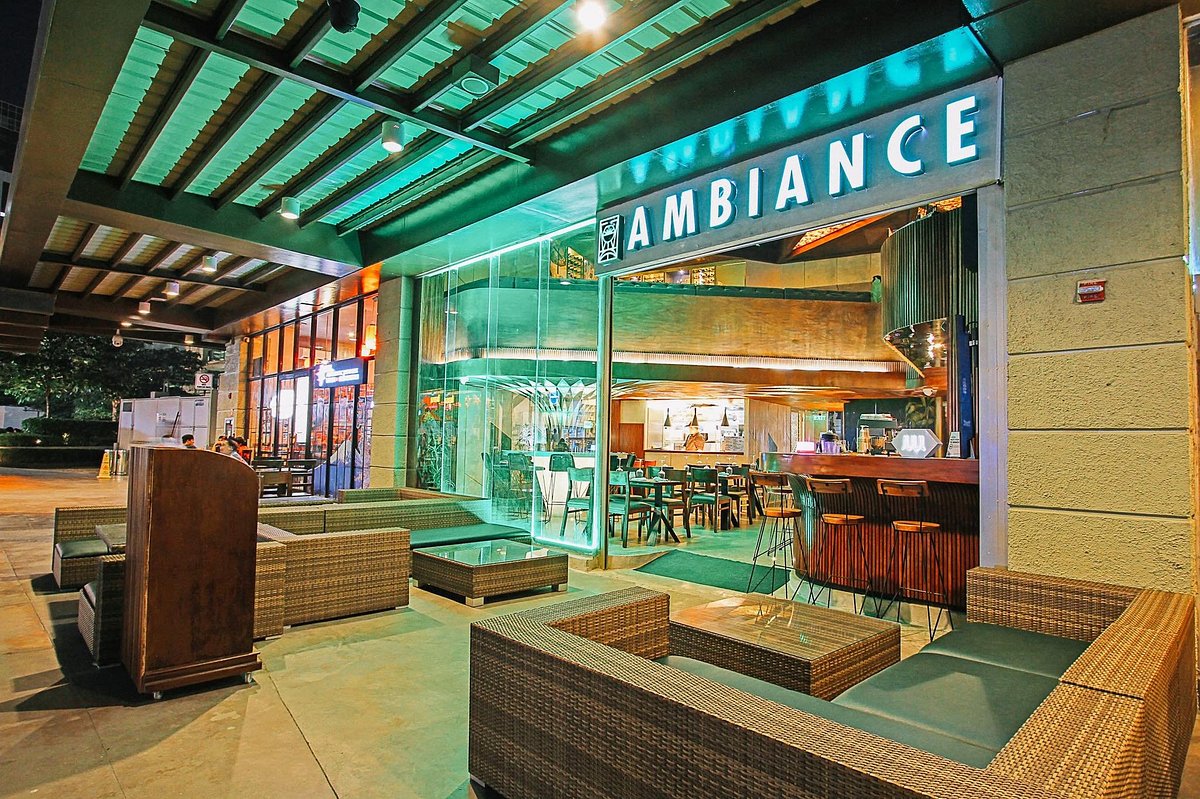Asian Fusion Restaurant: A Special Dining Experience in the Heart of Islamabad
Asian Fusion Restaurant: A Special Dining Experience in the Heart of Islamabad
Blog Article
Savor Genuine Oriental Cuisine With a Pan-Asian Spin for a Cooking Experience
Getting started on a culinary trip through genuine Eastern food, enhanced with a Pan-Asian twist, offers an one-of-a-kind opportunity to discover the rich tapestry of tastes that define the region's diverse cooking practices. As you ponder these enticing dishes, consider the social narratives and historic impacts that form them, each bite supplying a tale waiting to be found. asian fusion restaurant.

Discovering Pan-Asian Tastes
In the world of international gastronomy, Pan-Asian food attracts attention for its amazing diversity and the harmonious interplay of tastes from numerous Eastern cultures. This cooking technique celebrates the one-of-a-kind components and rich practices found throughout the continent, producing a tapestry of tastes that is both gratifying and interesting. Key to Pan-Asian cuisine is its capacity to stabilize contrasting tastes-- pleasant, salted, spicy, and sour-- while highlighting the freshness and high quality of each component.
From the umami-rich soy sauce of Japan to the fiery chili peppers of Thailand, Pan-Asian food uses a comprehensive scheme of tastes. These aspects are frequently combined in creative ways, improving recipes with layers of intricacy. For example, making use of great smelling herbs such as lemongrass and cilantro, usual in Vietnamese and Thai cuisine, includes a refreshing illumination to recipes, while the incorporation of coconut milk supplies a luscious, rich structure.
The focus on fresh produce and aromatic seasonings guarantees that each meal is not only a banquet for the taste but additionally for the detects. Pan-Asian food welcomes diners to get started on a cooking journey, exploring the vast and differed landscapes of Oriental gastronomy with every bite.
Fusion Meals to Try
While Pan-Asian food is celebrated for its traditional tastes, the contemporary cooking landscape is progressively accepting combination dishes that mix these traditional aspects with influences from various other areas. This innovative technique not just honors the abundant heritage of Oriental cookeries yet also introduces unique preference experiences that attract contemporary tastes buds.
A prime instance of such a combination dish is the Korean-Mexican taco, where marinated bulgogi beef is covered in a cozy tortilla, topped with kimchi and a spicy gochujang-infused salsa. This mix weds the bold, full-flavored tastes of Korea with the lively, fresh components of Mexican cuisine. Similarly, sushi burritos have actually obtained popularity, amalgamating the delicate virtuosity of Japanese sushi with the hearty, hand-held ease of a burrito, often featuring blend components like tempura shrimp and avocado with a drizzle of wasabi mayo.
Another notable recipe is Thai curry ramen, which instills the luscious, aromatic seasonings of Thai curry into the calming broth of standard Japanese ramen, creating a harmonious mix that tantalizes the detects. These blend dishes expand beyond plain uniqueness; they represent a culinary dialogue between cultures, urging exploration and technology worldwide of Pan-Asian food.
Important Components and Seasonings
To really appreciate Pan-Asian food, one must comprehend the vital components and seasonings that develop its structure. This varied culinary design attracts from an abundant tapestry of Asian practices, utilizing an unified blend of flavors and textures.
Aromatic aspects are pivotal, with lemongrass, garlic, and ginger being ubiquitous throughout different Pan-Asian recipes. These ingredients provide a fragrant base that enhances the complexity of tastes. Flavors such as celebrity anise, cardamom, and cinnamon present warmth and character, echoing impacts from tex mex near me areas like China and India.

Cooking Techniques and Tips
Mastering the art of Pan-Asian food calls for experience with its unique cooking strategies, each contributing to the dynamic tapestry of flavors this cooking custom is celebrated for. Central to these approaches is the stir-fry, a fast cooking method that protects the dietary stability and vivid shades of active ingredients. Using a wok, the stir-fry method permits even heat distribution, essential for attaining the particular structure and taste equilibrium of Pan-Asian dishes.
Another basic technique is steaming, especially widespread in Chinese cuisine. This gentle technique preserves the all-natural flavors and nutrients of active ingredients, making it excellent for seafood and veggies. Dumplings, a precious staple, usually benefit from steaming, resulting in soft, succulent textures.
Grilling, additionally integral, imparts great smoky midsts to recipes such as Oriental bulgogi or Japanese yakitori (asian fusion restaurant). This method often involves marinating ingredients, enabling flavors to permeate deeply before cooking over an open flame or hot plate
Lastly, grasping the art of stabilizing tastes-- sweet, sour, salty, bitter, and umami-- is crucial. Effectively layering these elements can raise a recipe from normal to amazing, using a complex and satisfying culinary experience that symbolizes the essence of Pan-Asian food.
Eating Experiences Worldwide
Around the world, Pan-Asian cuisine offers an unmatched eating experience, celebrated for its abundant tapestry of flavors and vivid discussions. This culinary sensation has transcended cultural borders, recording the hearts and palates of food fanatics worldwide. In multicultural cities fresh York, London, and Sydney, Pan-Asian dining establishments act as fusions where cooking customs from Thailand, Japan, China, and past merge, providing restaurants with an eclectic mix of recipes that highlight the region's diversity.
The global allure of Pan-Asian cuisine exists in its ability to use both credibility and check this site out development. Cooks masterfully wed traditional components such as lemongrass, soy sauce, and miso with modern techniques, leading to recipes that are both acquainted and refreshingly brand-new. This fusion allows diners to begin on a cooking trip that values heritage while embracing modernity.
In addition, eating experiences are elevated with thoughtfully created environments that show the ethos of Pan-Asian visual appeals. From minimal Japanese-inspired interiors to lively Thai-themed areas, each dining establishment uses an unique setting that matches the culinary offerings. Because of this, customers are not merely eating a dish however partaking in a cultural experience, making Pan-Asian eating an absolutely worldwide sensation.
Conclusion
The exploration of Pan-Asian food supplies a profound understanding of the elaborate interaction of flavors and cooking practices across Asia. By accepting fusion meals such as Thai curry ramen and sushi burritos, the cooking trip not only highlights the adaptability of conventional ingredients yet likewise showcases ingenious modern strategies. This gastronomic experience, enhanced by cooking methods and crucial seasonings, offers a distinct opportunity to value the multiculturalism and culinary virtuosity that specify Pan-Asian food on a worldwide scale.
Embarking on a cooking trip through authentic Asian food, boosted with a Pan-Asian spin, provides a distinct chance to check out the rich tapestry of tastes that define the area's diverse cooking customs.In the world of global gastronomy, Pan-Asian food stands out for its amazing variety and the harmonious interaction of flavors from various Eastern cultures. Key to Pan-Asian food is its ability to stabilize contrasting tastes-- wonderful, salty, spicy, and sour-- while highlighting the freshness and top quality of each active ingredient.

Report this page